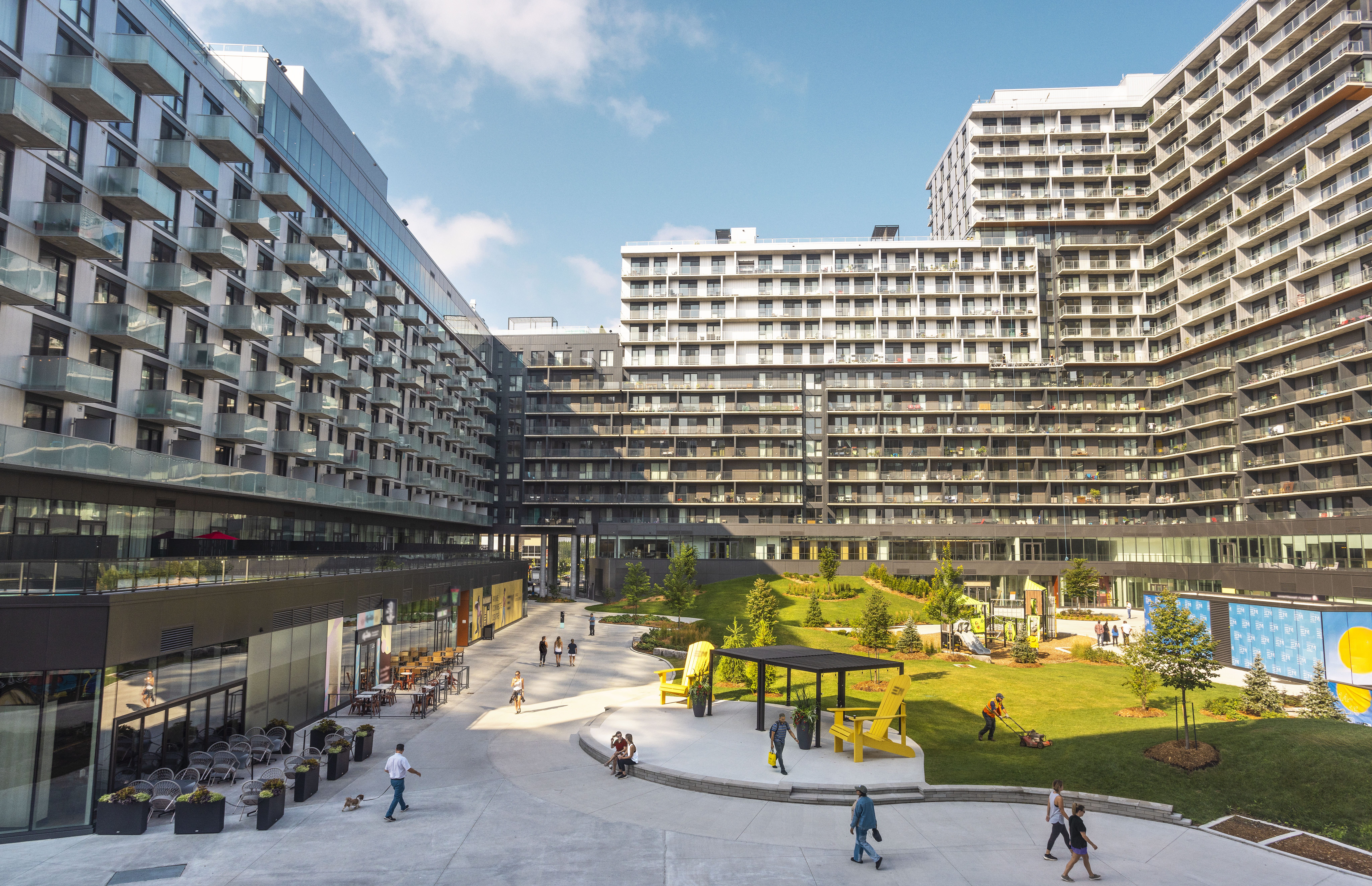Espace Montmorency: optimizing efficiency with an energy loop
Espace Montmorency, opened in June 2024, is a large multi-purpose project connected to the metro Montmorency in Laval that boasts a number of innovative energy efficiency solutions. The main innovation? An energy loop that leverages the buildings’ complementary uses to recover and reuse heat, thereby reducing the complex’s operating costs and greenhouse gas (GHG) emissions from its different components: residential, offices, commercial, and hotel.
The right energy exchange, at the right time
The mixed-use project was particularly suited to an energy loop, which allows heat to be exchanged between buildings according to the needs of the occupants and the time of the day. For example, the heat from the office tower during the day can be used to heat apartments in the evenings to maximize the comfort of the renters. To optimize the efficiency of heat exchanges between the four towers, an energy profile was developed to analyze and compare heating and cooling demand scenarios so that the right source of energy is used at the right time.

Complementarity means efficiency
The energy loop itself uses a mixed water system with temperatures ranging from 55 to 110°F. The system is connected to a thermal power plant, to which the complex’s HVAC equipment is connected:
- Two 160 ton each aerothermal heat pumps;
- A 515 kW electric boiler for off-peak heating;
- Six very high efficiency 1091 kW each natural gas condensing boilers
All the equipment was selected for its efficiency and ability to reduce GHG emissions and each piece can be used separately or simultaneously, depending on the building’s external temperature or energy consumption.
Finally, heat recovery equipment is used to optimize the energy efficiency of the buildings, including fresh air systems with heat recoverees for homes and businesses. a cassette exchanger for the office tower and a thermal wheel for the hotel tower.
Reducing hot water consumption was also a prime focus, and the system includes passive pre-heating exchangers in the mixed water loop, water/water heat recovering pumps and two condensation water heaters.
The thermal power plant manages all of these systems to optimize energy consumption and reduce GHG emissions while minimizing peak electrical consumption.
The energy loop: a win-win solution in a multi-use environment
The concept of an energy loop is still relatively new in North America but will become increasingly popular, especially for multi-use projects – primarily for its ability to reduce energy bills and improve environmental performance, but also for several other reasons:
- Resilience: if one energy source fails, others can take over.
- Versatility: an energy loop can be connected to an urban heat system, if needed.
- Savings: the system provides greater potential rental income and lowers operating costs.
- Sustainability: an energy loop reduces the risk of having to make major renovations in a few years to adapt to Quebec’s future energy situation.
Promising projections
Since Espace Montmorency opened quite recently, a complete energy audit is not yet possible, but the final simulation reports are extremely encouraging as they predict energy savings of up to 52%, an overall GHG reduction of up to 91% and an average energy consumption of 0.34 GJ/m2 compared to ASHRAE2010.
“Efficiency” grants
Espace Montmorency received $1.132 million for the project under the New efficient construction component* and $150,000 under the condensing boilers component.
Projected reduction of up to 91 % in GHG*
Expected energy savings of up to 52 %*
Want to save energy?
Your energy solutions representative will suggest the best solutions for your business. In partnership with an expert from the Development and Technological Assistance (DATECH) team, they will help you optimize your company’s energy use and energy efficiency while reducing costs.
* Up to the final simulation reports.
** Conditions apply for grants. See each program page for more information.